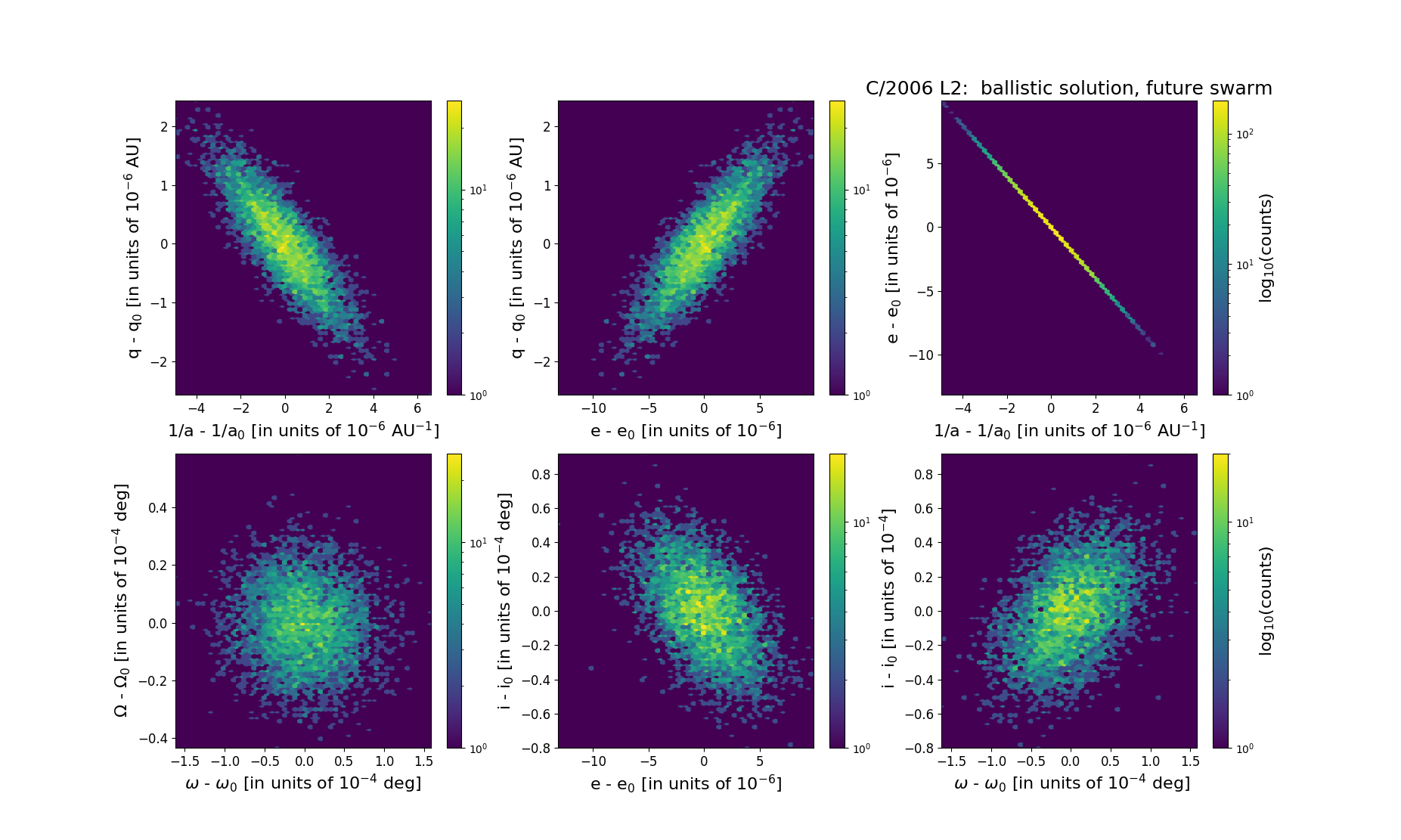C/2006 L2 McNaught
more info
Comet C/2006 L2 was discovered on 14 June 2006 by Robert H. McNaught (Siding Spring Survey); that is about 5 months before its perihelion passage. It was observed until 7 July 2007 (see picture).
Comet had its closest approach to the Earth on the day of its discovery (1.870 au).
Here, two solutions based on entire data set (a6 and n5) are very similar quality, and in Królikowska and Dybczyński 2013 we recomended pure GR solution for past and future orbital evolution. Both these solutions are based on data spanning over 1.06 yr in a range of heliocentric distances: 2.74 au – 1.994 au (perihelion) – 3.31 au. Here, we chose the NG solution as preferred;see Królikowska 2020.
This Oort spike comet suffers small planetary perturbations during its passage through the planetary system; these perturbations lead to escape the comet from the planetary zone on a hyperbolic orbit (see future barycentric orbits).
Comet had its closest approach to the Earth on the day of its discovery (1.870 au).
Here, two solutions based on entire data set (a6 and n5) are very similar quality, and in Królikowska and Dybczyński 2013 we recomended pure GR solution for past and future orbital evolution. Both these solutions are based on data spanning over 1.06 yr in a range of heliocentric distances: 2.74 au – 1.994 au (perihelion) – 3.31 au. Here, we chose the NG solution as preferred;see Królikowska 2020.
This Oort spike comet suffers small planetary perturbations during its passage through the planetary system; these perturbations lead to escape the comet from the planetary zone on a hyperbolic orbit (see future barycentric orbits).
| solution description | ||
|---|---|---|
| number of observations | 406 | |
| data interval | 2006 06 14 – 2007 07 07 | |
| data type | perihelion within the observation arc (FULL) | |
| data arc selection | entire data set (STD) | |
| range of heliocentric distances | 2.74 au – 1.99 au (perihelion) – 3.31 au | |
| detectability of NG effects in the comet's motion | comet with determinable NG~orbit | |
| type of model of motion | GR - gravitational orbit | |
| data weighting | YES | |
| number of residuals | 794 | |
| RMS [arcseconds] | 0.49 | |
| orbit quality class | 1a | |
| orbital elements (barycentric ecliptic J2000) | ||
|---|---|---|
| Epoch | 2305 09 15 | |
| perihelion date | 2006 11 19.94026256 | ± 0.00012548 |
| perihelion distance [au] | 1.99185210 | ± 0.00000070 |
| eccentricity | 1.00018974 | ± 0.00000284 |
| argument of perihelion [°] | 47.969720 | ± 0.000042 |
| ascending node [°] | 239.288007 | ± 0.000013 |
| inclination [°] | 101.012257 | ± 0.000023 |
| reciprocal semi-major axis [10-6 au-1] | -95.26 | ± 1.42 |
| file containing 5001 VCs swarm |
|---|
| 2006l2a5.bpl |

